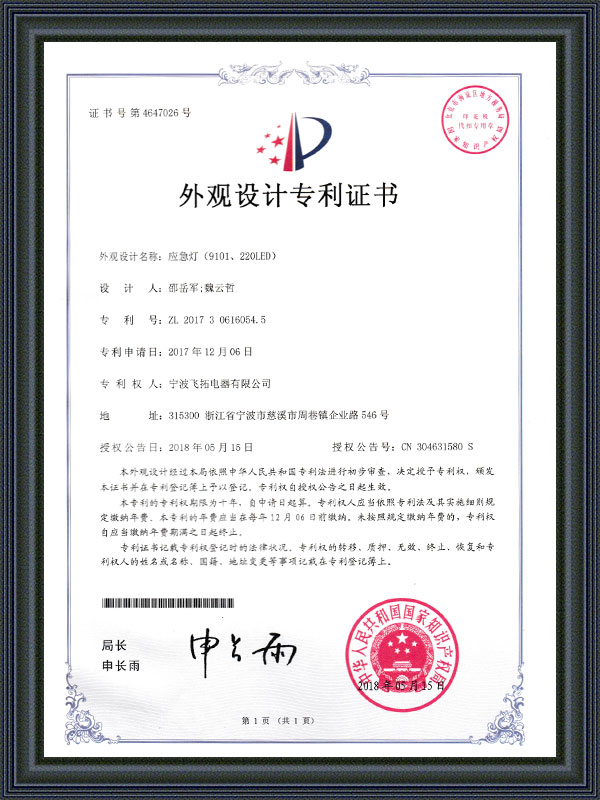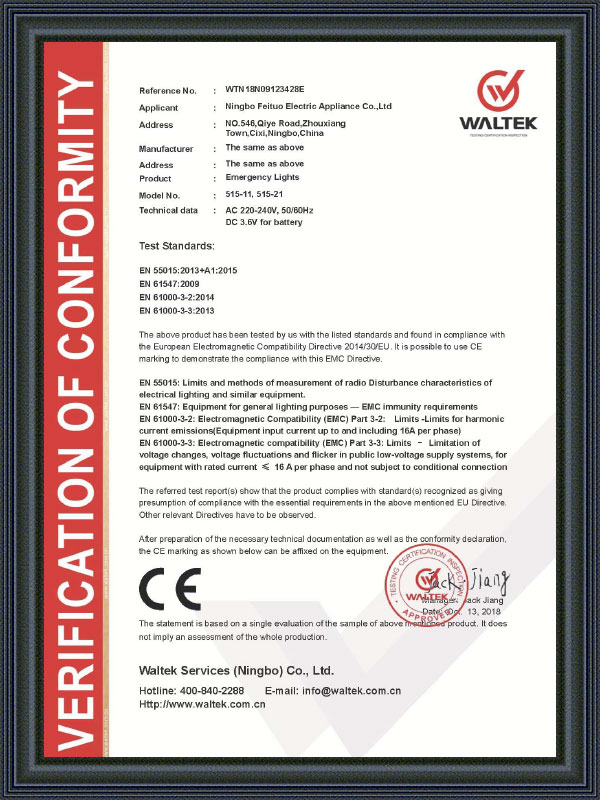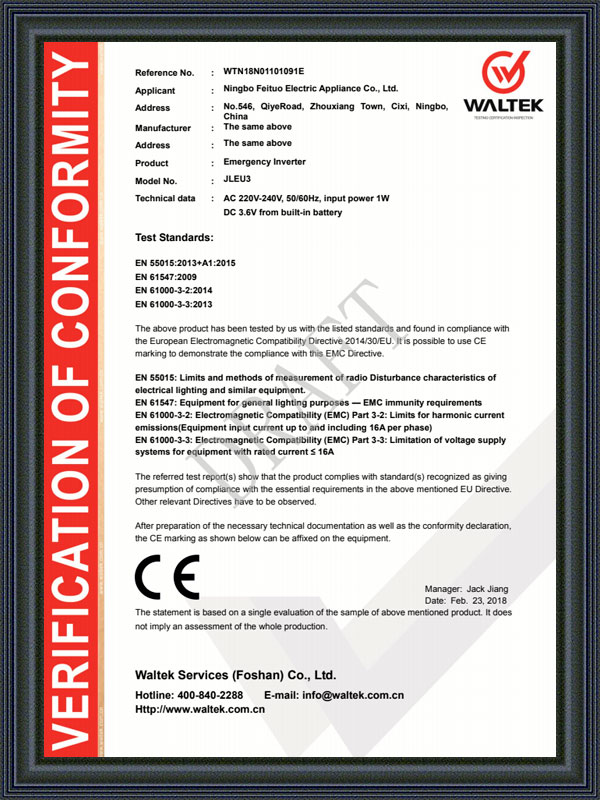Ningbo FEITUO Electric Appliance Co., Ltd.
CE / ROHS / ULなどの地元の市場の安全要件を満たすために、対応する証明書を提供します。 54年間緊急照明業界に従事しているOEM/ ODM/ SKDは大歓迎です
その設立以来、Feituoは品質を追求して歩くことを止めたことはありません。
-

0
設立
-

0+
スタッフ
-

02
中国の工場
-

02
ベトナム工場
-

0セット
生産能力
最新のニュースや展示に注意してください
-
効率で照らされる:科学は緊急灯を導いた
緊急照明の領域では、効率的なビーコンは絶対に進歩的な時代に導かれます LED緊急照明 。舞台裏では、これらの照明デバイスは、電力効率、明るさ、寿命のフレーズでそれらを分離する科学的根拠を誇っています。 LEDの緊急灯の中心には、光が発光するダイオード(LED)テクノロジーが...
-
革新的な避難:緊急事態におけるLED緊急出口標識の役割
私たちが滞在するペースの速い予測不可能な国際的には、安全が最重要です。緊急条件全体で居住者のうまく存在することを保証するための重要な詳細の1つは、現代の世代の展開です。 LED緊急出口標識 革新的な避難技術の最先端に立ってください。これらの標識と輸出標識は、従来のGo Out S...
-
あなたの道を照らす:あらゆる機会にポータブル緊急灯
緊急事態の予測不可能な風景では、信頼性が高く汎用性の高い照明ソリューションを持つことが最重要です。最先端の紹介 ポータブル緊急灯 、考えられるあらゆる状況を通してあなたの不動の仲間になるように設計されています。停電、屋外の冒険、予期しない緊急事態であろうと、この革新的な光源は安全...
-
長期にわたるパワーを解き放つ:充電式の鉛蓄電池の回復力
エネルギー貯蔵の領域では、 充電式鉛酸バッテリー 頑固なチャンピオンとして際立っており、長期にわたる力と揺るぎない回復力の本質を体現しています。この革新的な技術は、信頼できるエネルギーを提供することから、バックアップ電源システム、電気自動車、再生可能エネルギー貯蔵ソリューションま...
プロジェクトを念頭に置いていますか?
仕事に取り掛かりましょう!
接触
業界 知識の拡張
How does Ni-Cad Battery perform under different temperature conditions?
The performance of Ni-Cad Battery is affected by temperature changes, which is particularly significant in low and high temperature environments. In a low-temperature environment, the conductivity of the battery decreases and the fluidity of the electrolyte becomes worse, causing the internal reaction rate of the battery to slow down. This can lead to a weakening of the battery's ability to discharge, manifesting as reduced discharge capacity. Under low temperature conditions, the electrochemical reaction in the battery is restricted by temperature, and the migration speed of electrons and ions slows down, thus affecting the overall performance of the battery.
On the contrary, in high temperature environment, the electrolyte fluidity of Ni-Cad Battery increases, which helps to improve the discharge performance of the battery. This is because high temperature promotes the migration of ions in the electrolyte and accelerates the chemical reaction between the positive and negative electrodes. However, high temperature environments also bring a series of challenges. One of the main issues is an increase in self-discharge, which is the rate at which a battery discharges itself when not in use. This can result in a loss of energy from the battery, affecting its cycle life.
In practical applications, the temperature during charging is also a factor that needs to be considered. Charging temperatures that are too high or too low can cause problems. At excessively high temperatures, gas production inside the battery may increase, causing pressure to rise, leading to safety issues. On the contrary, during charging, too low temperature may reduce the fluidity of the electrolyte, restrict the internal reactions of the battery, and affect the charging efficiency.
However, in some special application scenarios, such as extreme high or low temperature environments, some special design measures or other equipment may be required to ensure that the battery can work properly. This may include the use of temperature regulation devices, the use of insulation materials, etc. to improve battery stability and performance.
Information to be updated












